I love bonefish. From the very first one I hooked on the flats of Turneffe Atoll in Belize in the mid-1990s to chasing them all round the globe. The thrill of the stalk and the power of that first run have never ceased to send a shiver of excitement pulsing through me. Most of my early career in saltwater fishing was based in the Caribbean – the marl flats of Mexico, the coral flats of Belize, the wide open sand flats of the Bahamas, the edges in Cuba to the turtle grass flats of Venezuela. Here I spent hours, days and weeks creeping up on the glistening tails of Albula vulpes, the grey ghost of the flats… the Caribbean bonefish. There is something truly honest about a bonefish. If you make the right cast, the right presentation and use the right fly, unlike permit or other species the bonefish will normally oblige you with a hook up.
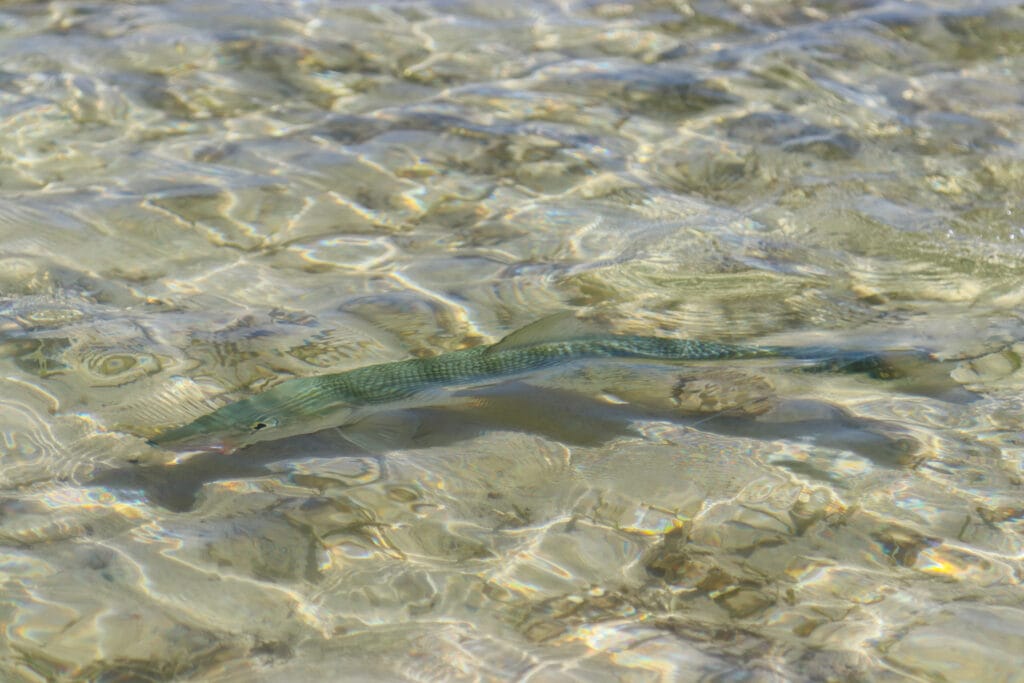
It was not until the early 2000’s that I finally made my way into the Indian Ocean to chase a different kind of bonefish – Albula glossodonta, the Indian (and Pacific) bonefish. I will never forget the first time I set foot onto the open sand flats of St Francois Atoll. I had been used to chasing pairs and small groups of fish previously and as I slipped quietly over the edge of the skiff onto the hard sand I was about to have my mind fried. My guide and fishing partner began to wade line abreast through the ankle depth water on a pushing tide across a flat that went on as far as the eye could see. Sea slugs littered the bottom with only the odd patch of green algae giving away the tidal movement as it drifted nonchalantly past. Suddenly it was a little like someone had thrown a switch as we hit the optimal depth, us coming from the lagoon and the bones from the ocean side. We were surrounded by a tide of fish coming towards us, all of them hungry.
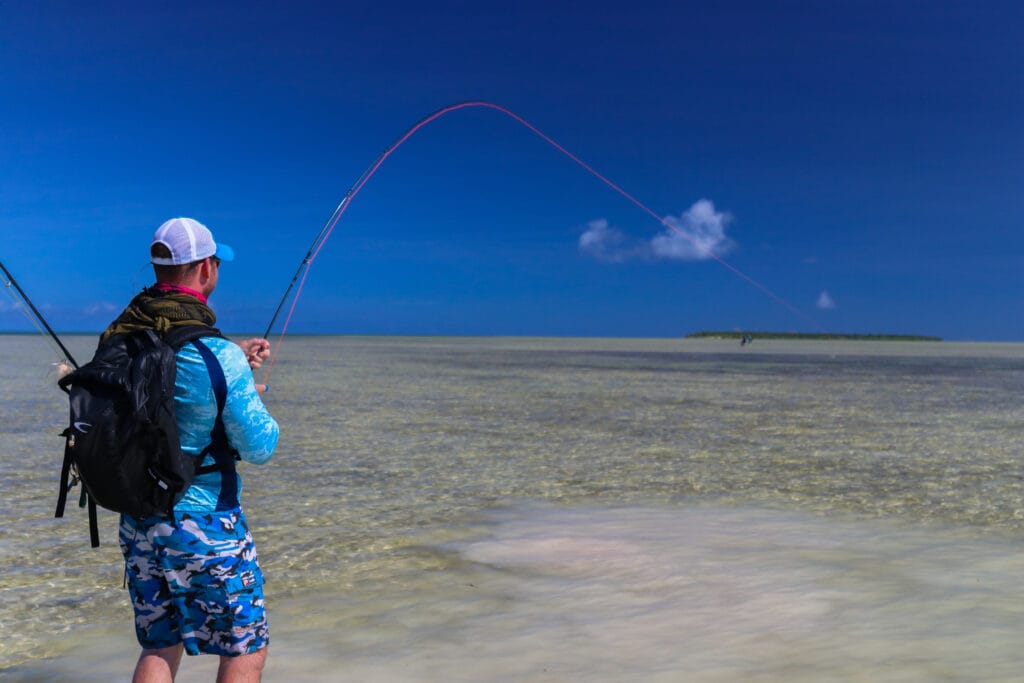
It was carnage – a small size six silly legs Gotcha cast ahead and given one small twitch was enough to have fish charging six feet to intercept and tailing on the fly aggressively. No sooner had one battle ceased and the fish released, another target hove into view and the process was repeated. It was like a river of fish coming towards us and after a while I had to stop and just watch my fishing partner landed fish after fish. It was a baptism of fire but chatting with the guides, this was not an isolate incident or a particularly extraordinary experience. I was dumbstruck and 20 years later fishermen are still experiencing this calibre of fishing.
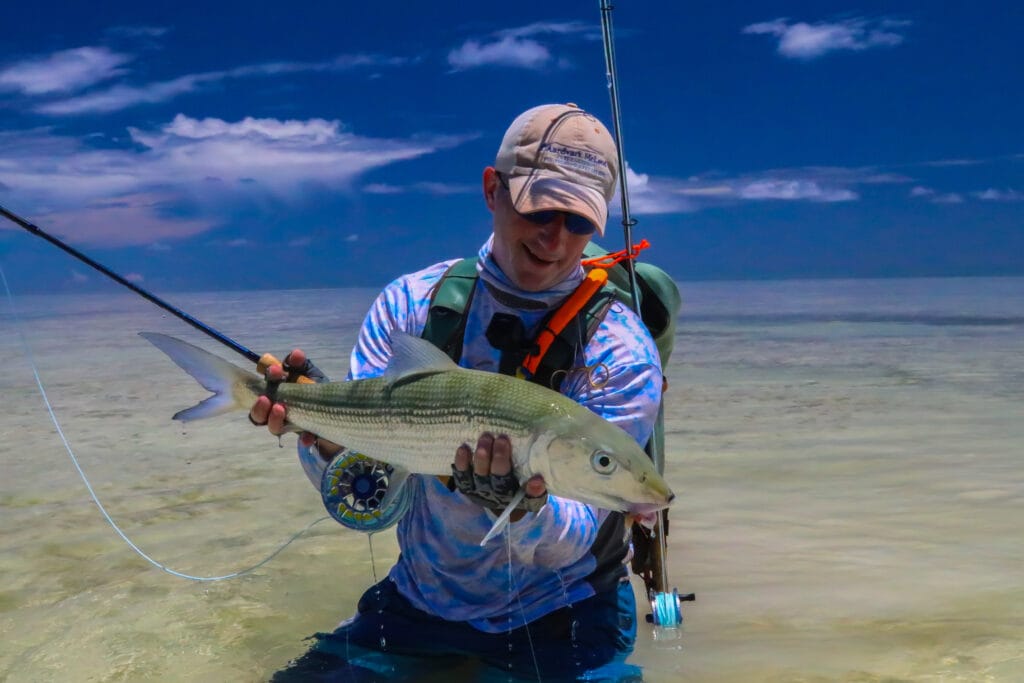
Over the years there are few observations I have made that perhaps might be a difference between the two species. I say might as some of these factors could also be put down to differing habitat. The first observation is that the Indian Ocean bones are longer and leaner than the Caribbean fish. They don’t develop that incredibly thick head and shoulders of some of the really big bones I have seen in Los Roques in Venezuela or the Bahamas. They also tend to move in bigger schools rather than singles and doubles. Not to say that this does not happen, but is more of a general observation. I suspect that this is for safety and something I have also seen on the flats of the Bahamas and Belize. Open sand flats don’t have much cover from predators, especially barracuda, sharks or in the case of the Indian Ocean and Christmas Island the other apex predator, giant trevally, that also roam the flats.
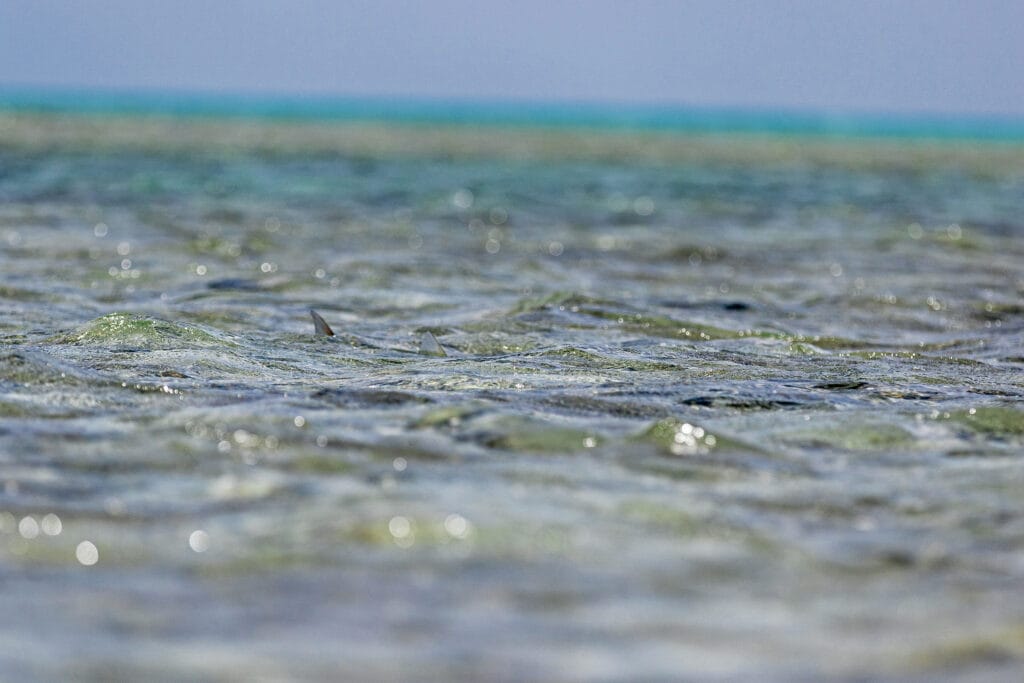
The second is the fishing in the Indian Ocean can actually be better on a dropping tide as opposed to a pushing tide. This slightly goes against the normal and is really down to the structure of the flats. These huge drainage areas on theses atolls which drain into a series of channels that dissect the flats like the veins on a leaf. As the fish slide off the flats and are pushed into the channels they seems to feed aggressively to grab that last meal. It’s possible to find that pinch point or highway the fish use to get to deeper water which can be the perfect intercept point, allowing you to pick off fish without even having to move. Although theoretically the Caribbean fish should do the same, I have always found them to be quite spooky on a dropping tide.
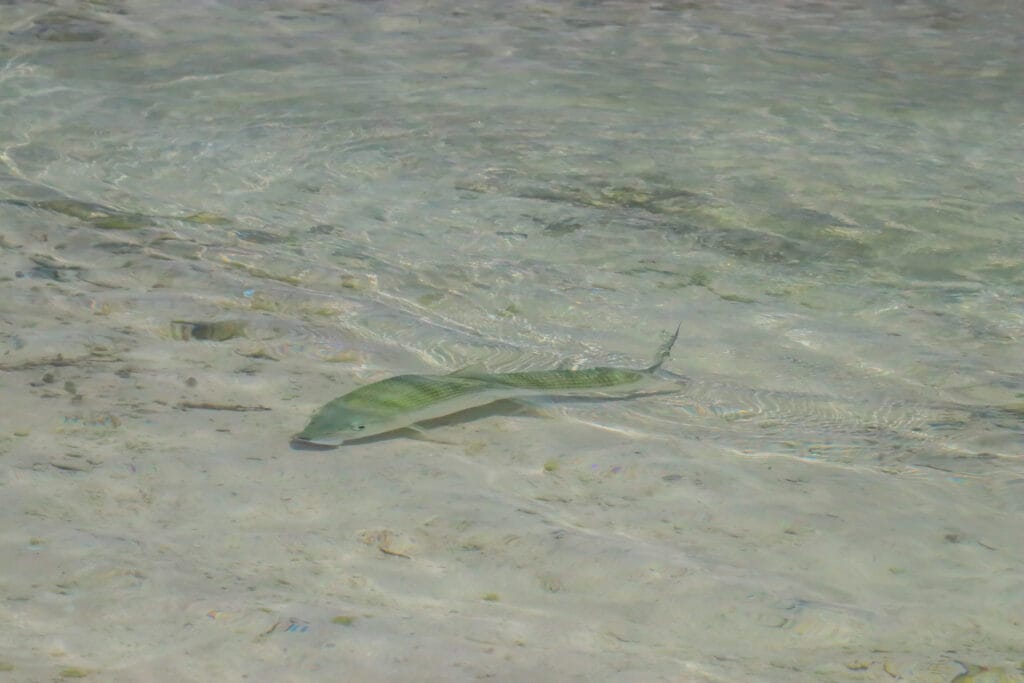
I have also noticed a slight distinction in the way I fish for the two species. Indian Ocean bones react better to an ambush. By that I mean I lead the fish quite a long way and let the fly sink to the bottom. As the fish approaches one short strip is enough to kick up the sand and the fish will often pounce like a cat on a mouse, tailing hard to prevent the tasty morsel escaping. They seem to be less timid in their approach which may also be a product of less contact with humans. Fishing amongst the coral of the ocean side flats is more akin to the Caribbean where a weed guard helps massively and landing a fish always has an element of luck and high rod angles.
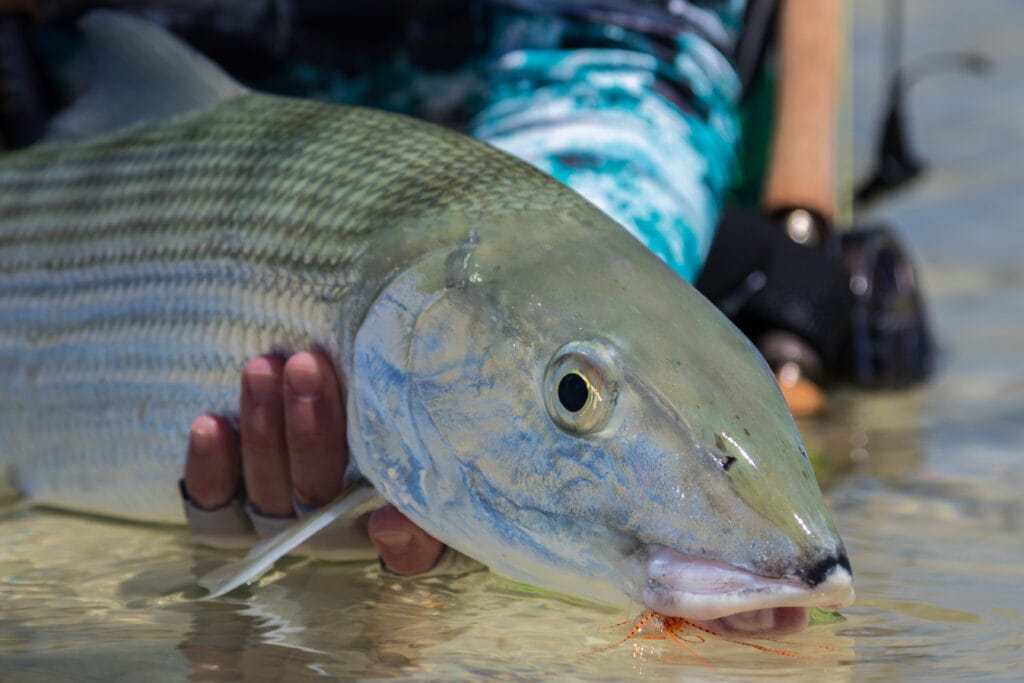
In terms of tackle and set up, there is really little difference as they are pretty much the same fish. 9 foot 7 or 8 weight rods paired with a reel equipped with a proper drag. Most of the Indian Ocean fish do tend to be less leader shy as they have seen fewer people, so it can be advisable to go heavier on your leader set up than perhaps you might normally. The only takes I have had which are more aggressive are the bones of Los Roques in Venezuela when they hit a minnow pattern off the beach. That’s more like setting a hook into a brick and many are bust off. I recommend using a 9 foot tapered 13.2 lbs leader with three feet of 11.6 lbs fluorocarbon tippet for abrasion resistance if it finds the coral. This doubles for trigger fish so I don’t have to change my rig.
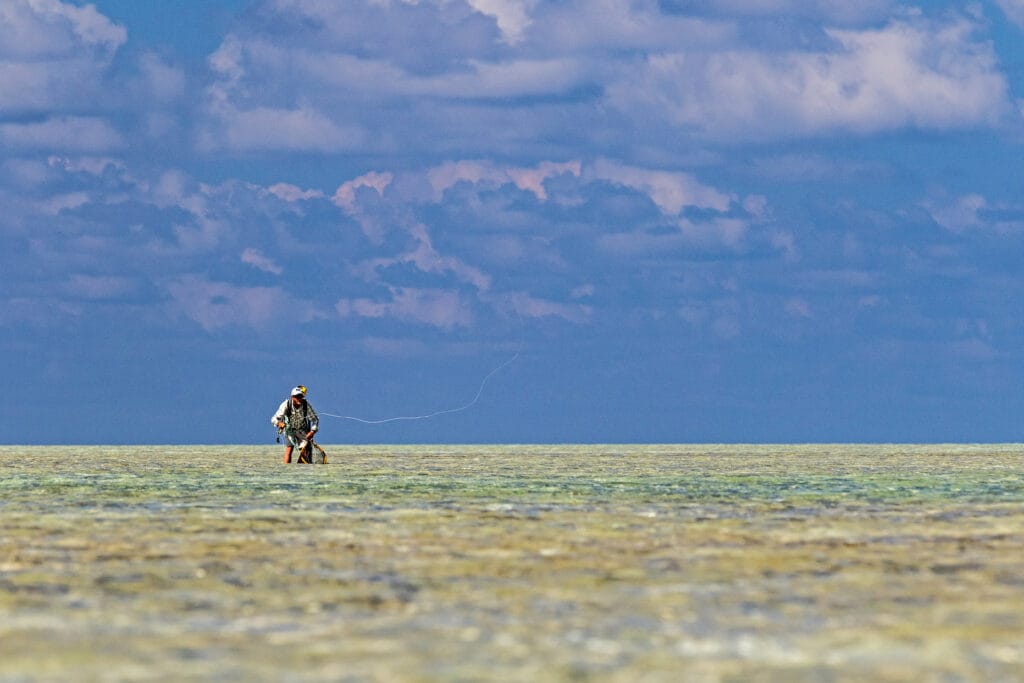
When it comes to flies this will always boil down to personal preference. I have found that Indian Ocean fish are suckers for shrimp style flies with rubber legs. I know this is the case in many places but I have found it to be particularly true on these far flung atolls. I think part of it is the disturbance they create in the sand and perhaps that shrimps represent a big solid meal. The first time I tried one of these was again on Alphonse Island – a big size 4 with dumbbell eyes called a Will’s Skittal. This pattern was actually developed by a friend of mine on Ambergris Caye in Belize as a permit fly representing a Mantis shrimp. I took one look at the way it moved in the water with its pulsing bunny strip and just knew those fish would want to snaffle it.
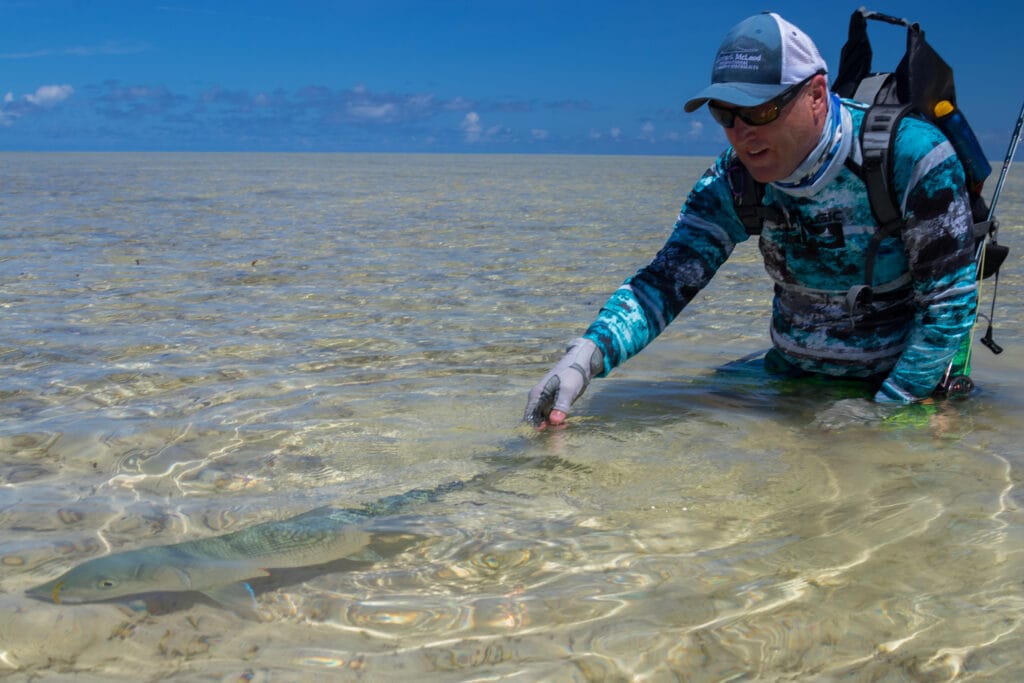
As I walked down a finger flat in the middle of the lagoon I saw a pair of large bonefish moving around in a white sand hole midst of the coral. I made a longish cast and dropped the fly to the edge of the sand. Almost as soon as the fly landed both fish spooked out of the hole in the opposite direction which I found mildly upsetting. I did not move and watched as one of these fish did a massive arc around the flat before coming straight back through the hole at almost full pace and smashed the fly. I don’t think I have ever seen a bonefish behave like that, but those flies accounted for many bones that week. These days I like to fish a smaller, but equally effective pattern, the Itchy Trigger. Originally designed for trigger fish, this fly is tied on a much heavier wire hook to withstand trigger chomping, but its an excellent pattern for the Indian Ocean bone. The heavier hook does not appear to worry them and gives added confidence when applying maximum pressure.
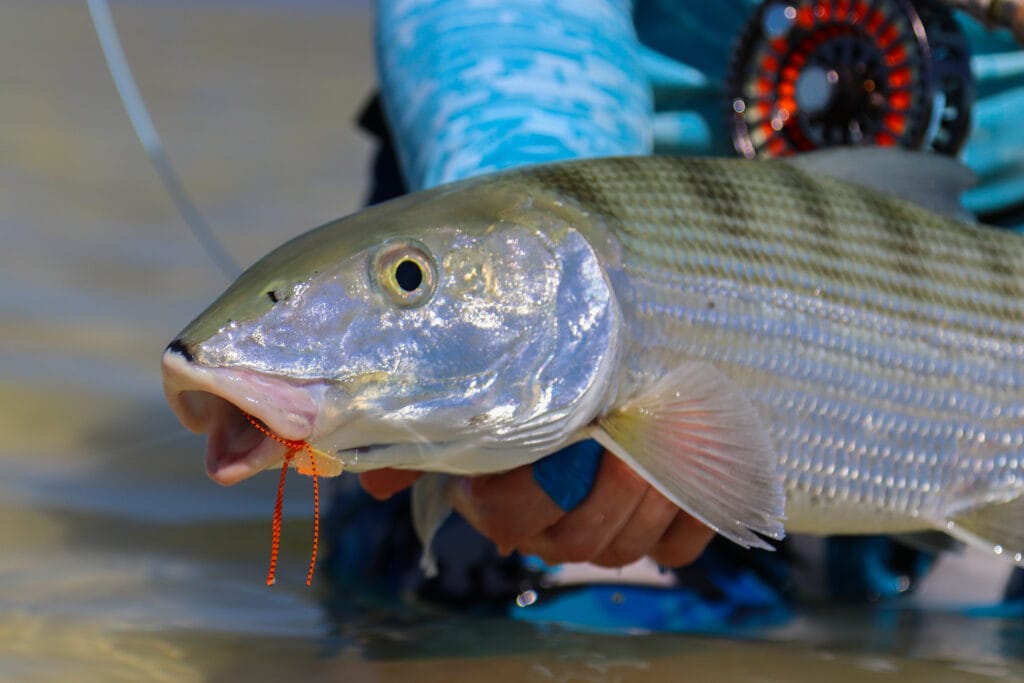
Another distinction is that it is possible to get seriously close to these fish and in some instances they will even take a fly almost at the end of the rod. A couple of years ago I found myself wading up the inner edge of a huge area of white sand on the north eastern end of Providence Atoll in the Seychelles. Its about as perfect a bonefish flat as I have seen anywhere in the world – it spans approximately 1 ½ km from the reef edge right across to the lagoon with an apex that meanders up the middle. Three of us and our guide moored up the tender boat and began to wade up the flat towards the apex, splitting into pairs. The neap tide was dropping slowly and as we hit that mid-calf depth the first fish slid down the flat towards us. Its back looked almost green, so I suspect it had come off the grass areas to the east and now stuck out like sore thumb.
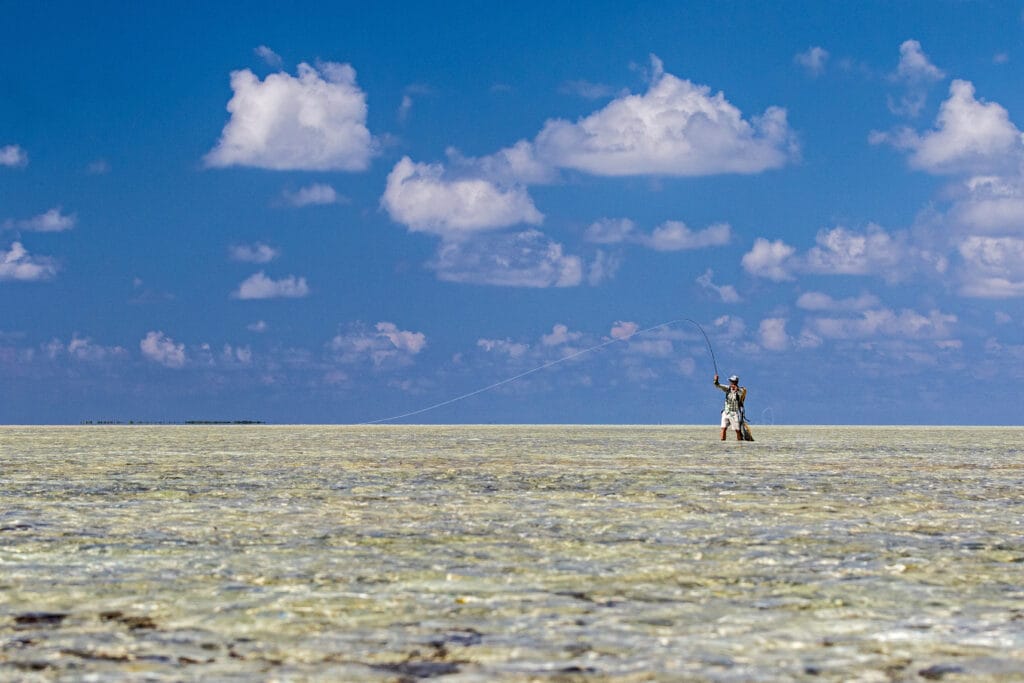
The fish was nearly on us we hunkered down on the flat with our chests nearly on the water. My fishing buddy almost casually flicked a rolling bead crab several feet ahead of it without even getting any fly line out of the rod tip. The fish immediately accelerated but at the last minute it shied away. By now it was no more than ten feet away and as it moved off, I encouraged him to make another cast as the fish now cruised to our right. The fly landed, he gave it one twitch with the rod tip and the bonefish attacked it. In response it tore off across the flats, the line making that satisfying tearing noise as it ripped through the surface film and disappeared off in a puff of sandy water, his reel singing its tune as it went. Fly line vanished in a few seconds closely followed by a considerable amount of backing. The fish was splashing in the distance and further up the flat, the line still trying to catch up as we both grinned. Slowly he began to regain line and some sense of control. Out of left field we suddenly saw our guide running towards us across the flats brandishing his large net. The two reached us roughly simultaneously and he scooped up the fish; only then did we realise what a tank it was. The fish measured 65 cm in length with a 33 cm girth which we reckoned was about 8 lbs and a superb specimen. We landed a further 6 or 7 fish in the next hour before the water height ruined our fun and they returned to the ocean.
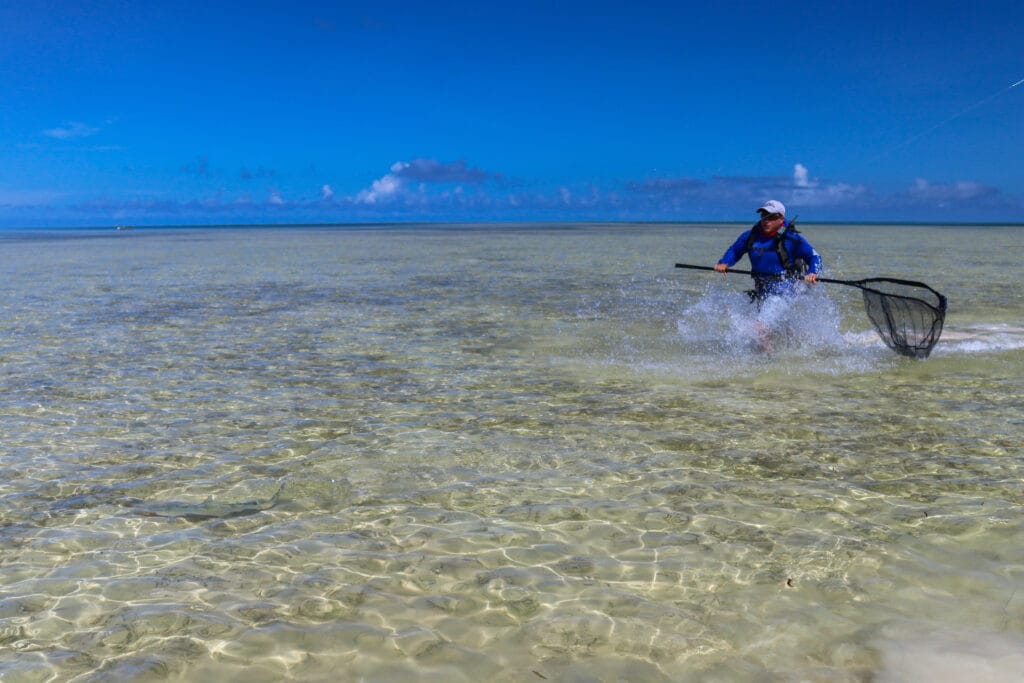
Although the numbers of fish in schools can be much bigger than their Caribbean cousins, Indian Ocean bones seem to have a slightly larger average weight, but very rarely do you see really big bonefish in the Seychelles. A 10 lbs fish is unusual, although one can become a bit complacent as you try and horse in yet another fish of over 6 lbs and wonder why it is so hard. The exception to this would be St Brandons Atoll in Mauritius which is a totally different story – leviathans inhabit those flats. This is perhaps one of the wildest fisheries on the planet and has some of the largest bonefish anywhere in the world. Reached by a 36-hour overnight sail from the Port Louis, 10 lbs bonefish are in abundance with some estimated in their mid-teens from their fork lengths and dimensions. The largest one landed to date here had a fork length of 87 cm which is just monstrous. Fishing for monster bonefish does require a slight change in tackle so a 9 weight is going to be a better tool for the job with more backbone to stop a fish hitting the drop off. If you have your sights set on a monster, this is where you should head.
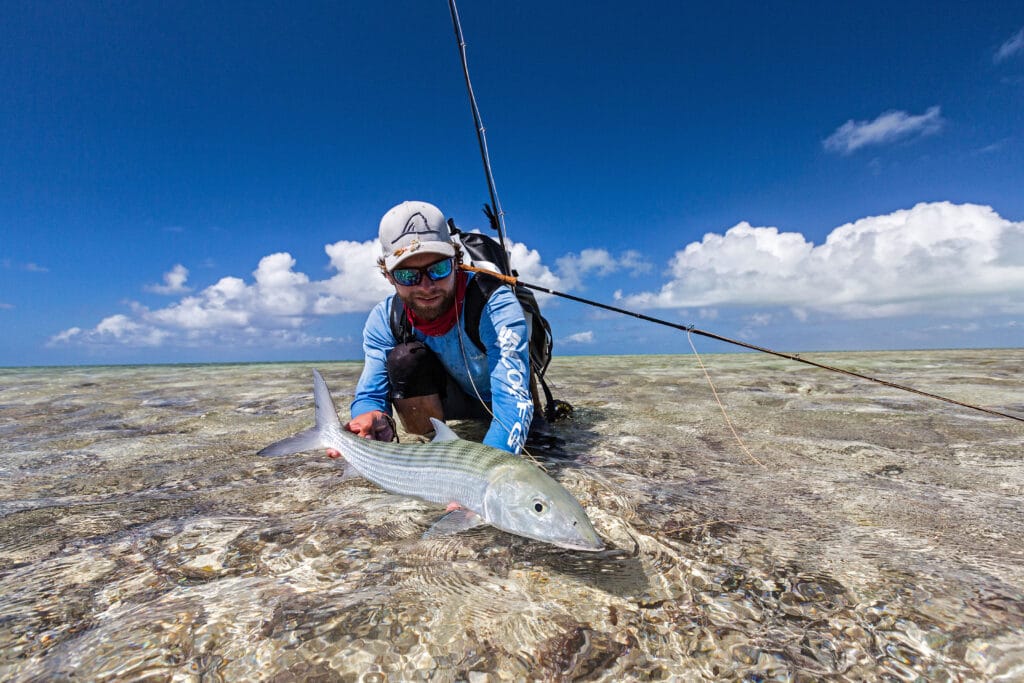
One thing I have learnt over the years is don’t ever believe catching bonefish is easy. Anyone who claims that has never fished for big bones. They get big for a reason and I believe that big bonefish can be just a challenging as target as permit or triggerfish. At that point it does not matter which species you are fishing for, they are still going to teach you a lesson if you get it wrong and leave you crying into your drink come evening time. Many have asked me which is better.. there is no answer to that in my mind, they are just different and I am happy chasing either. Many nights as I try to sleep I will see their glistening tails in the evening light and dream of the next time I will be venturing onto the flats. It can never come too soon.
For more details on bonefishing in the Indian Ocean please do not hesitate to contact Peter McLeod or call our office on +44(0)1980 847389.
